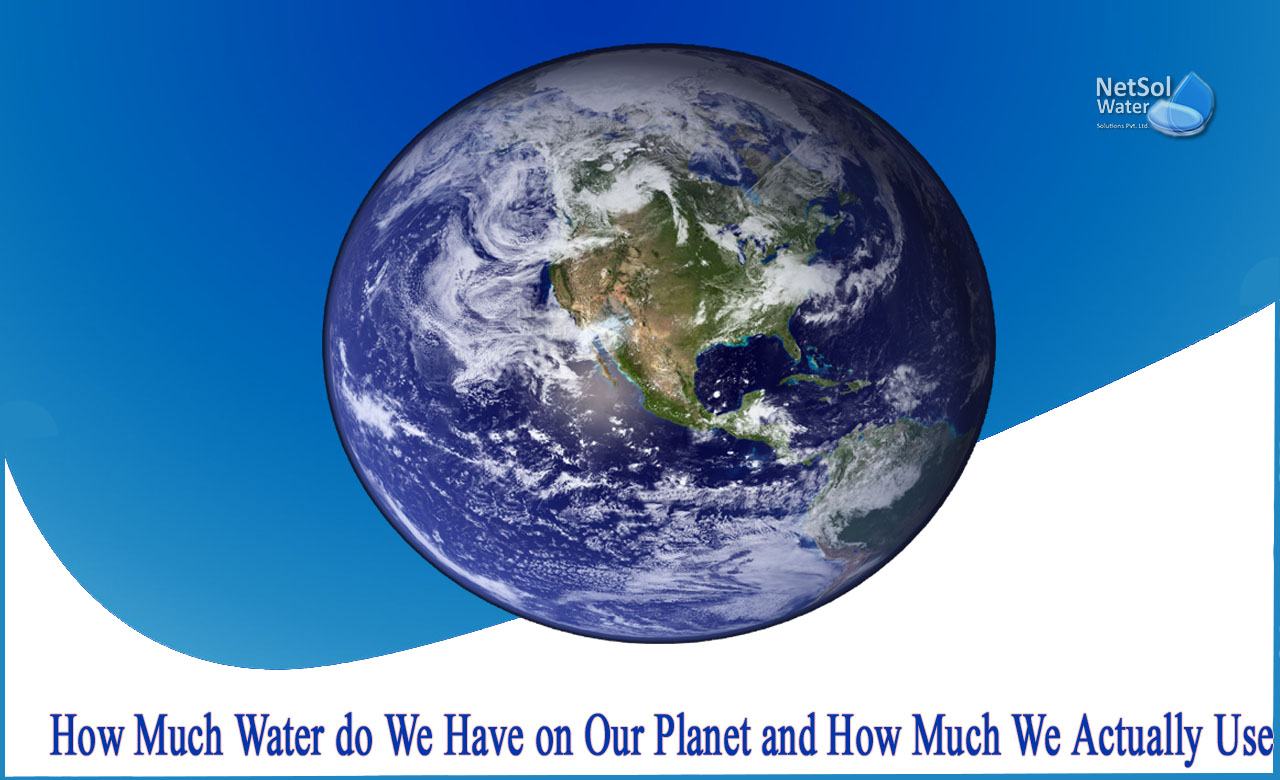How much water do we have on our planet and how much we actually use?
The Earth's environment is one that is dominated by water. But how much water do we have on, in, and above the surface of the earth?
Water covers over 71 percent of the Earth's surface, with the seas holding 96.5 percent of the planet's total water. Water vapour, rivers and lakes, icecaps and glaciers, soil moisture and aquifers, and even you and your dog are all sources of water.
Water is never still. As a result of the water cycle, our planet's water supply is constantly migrating from one region to another and from one form to another.
Earth's water encased in a bubble
The globe picture depicts blue spheres showing the proportional amounts of water on Earth in relation to the size of the Earth.
Are you astonished by how little these water spheres appear?
They are only insignificant in comparison to the immensity of the Earth. Each sphere symbolizes "volume" which aims to depict three dimensions. With a diameter of around 860 miles, the largest sphere, representing all water on, in, and above the Earth, would have a volume of around 332,500,000 cubic miles (mi3) (1,386,000,000 cubic kilometres (km3) (1,385 kilometers).
The planet's liquid fresh water in the form of groundwater, swamp water, rivers, and lakes is depicted in the smaller sphere. This sphere's volume would be around 2,551,000 mi3 (10,633,450 km3), resulting in a sphere with a diameter of about 169.5 miles (272.8 kilometers). True, all of this water is pure, and we all utilise it on a regular basis, but much of it is deep underground and out of reach of humans.
The distribution of water on Earth
>Glaciers and other forms of ice: 2.15 %
>0.61 percent groundwater
>Lakes with fresh water: 0.009%
>0.008 percent in inland seas
>Soil Moisture Content: 0.005%
>Atmospheric pollution: 0.001%
>97.2 percent is ocean water.
>Rivers: 0.0001%.
Use of Water
Water availability variability is vital for the functioning of aquatic organisms as well as the availability of water for human consumption: water that is only accessible during a few wet years should not be considered renewable. Because the majority of global runoff originates in locations with relatively low climatic fluctuation, total global runoff has a low variability.
Indeed, even in the most arid zones, there are few problems with runoff variability because the majority of usable sources of water come from high mountain regions that provide highly reliable glacier melt as the primary source of water, which also occurs during the summer peak period of high demand for water.
Water may be used both directly and indirectly. Bathing, drinking, and cooking are examples of direct uses of water, but indirect uses of water include the processing of wood to manufacture paper and the production of steel for vehicles. Agriculture, industry, and energy utilize the majority of the world's water. Drinking and household needs are two of the most popular uses of water.
o Recreation
o Commerce and Industry
o Agriculture
o Thermoelectricity/Energy
1: Agriculture Water
Agricultural water is used to grow fresh produce and feed livestock. Agricultural water is used to grow fruits and vegetables as well as raise cattle, all of which are essential components of our diet. Irrigation, pesticide and fertiliser external applications, crop conditioning (such as light irrigation), and frost management all use agricultural water.
2: Industrial Water
During the production process, water is utilised to either manufacture items or cool the equipment needed to create those things in the manufacturing and other industries. Smelting facilities, petroleum refineries, and enterprises that make chemicals, food, and paper products all use water. Water is widely used in the manufacturing of food, paper, and chemicals.
3: Water for Medical Use
Water is crucial in the realm of health care. Water is vital to the efficacy of the health business, from washing surgical tools and equipment to creating a relaxing atmosphere for patients to get hydrotherapy. However, moist conditions and liquid solutions can promote the development of many bacterial and protozoal organisms.
Waterborne illnesses can be transmitted by:
>In hydrotherapy, direct touch is preferred.
>Water ingestion
>Indirect touch, for instance, a medical/dental instrument or equipment
>Aerosol inhalation from water sources
>Water aspiration
>Contact with blood (for example, haemodialysis)
Because many patients have weaker immune systems, it is critical that water used in health care facilities be not polluted.
As water is an important resource, it becomes the duty of each human to use it wisely and conserve it as much as possible because water is why we live.
Netsol Water is Greater Noida-based leading water & wastewater treatment plant manufacturer. We are industry's most demanding company based on client review and work quality. We are known as best commercial RO plant manufacturers, industrial RO plant manufacturer, sewage treatment plant manufacturer, Water Softener Plant Manufacturers and effluent treatment plant manufacturers. Apart from this 24x7 customer support is our USP. Call on +91-9650608473, or write us at enquiry@netsolwater.com for any support, inquiry or product-purchase related query.



